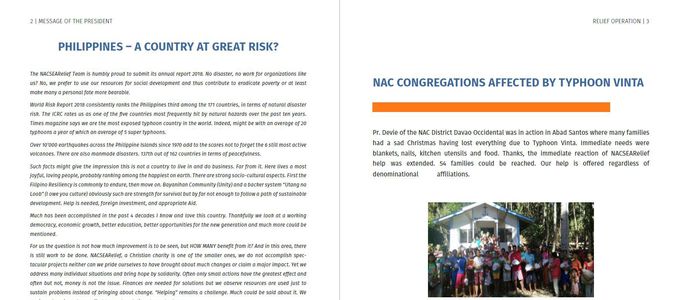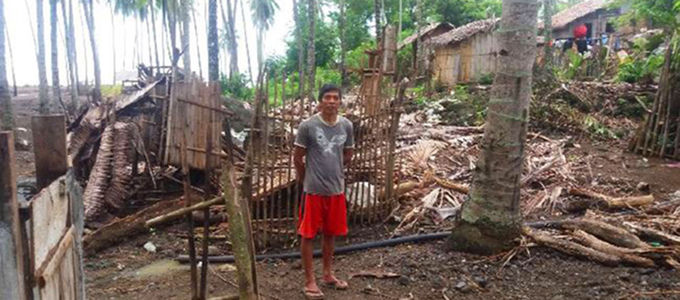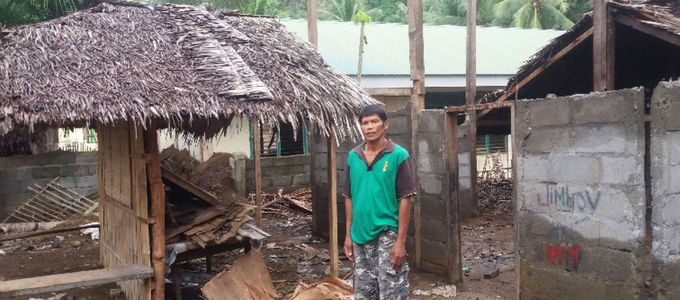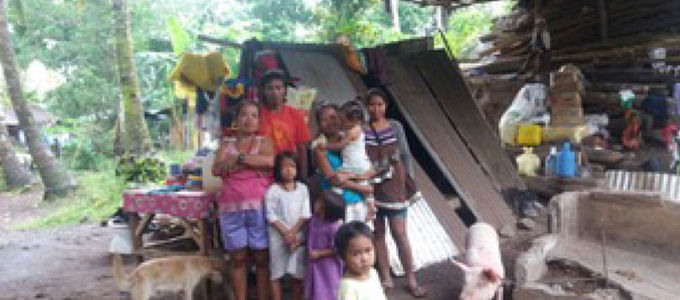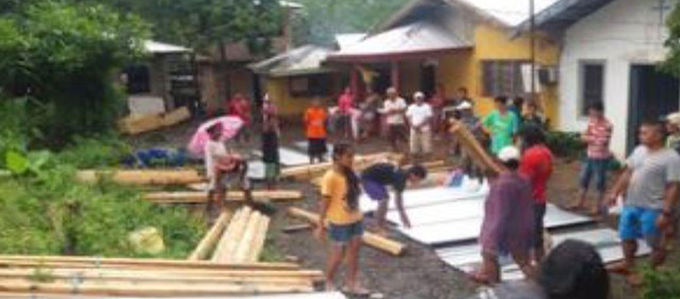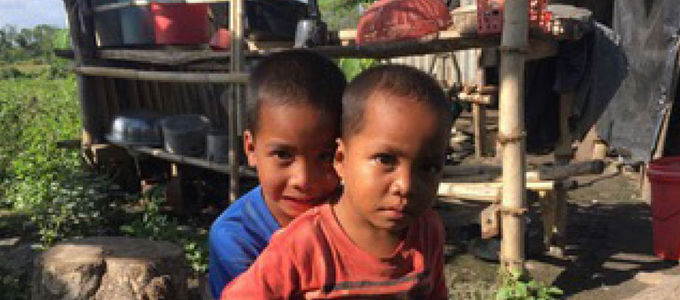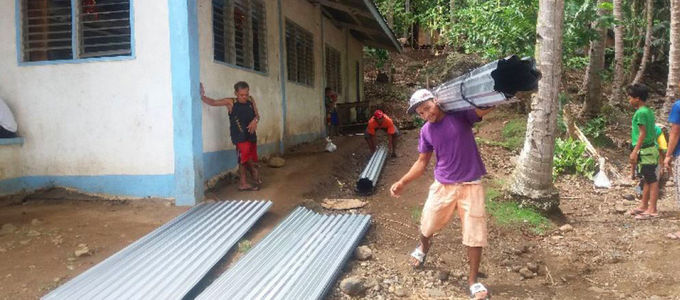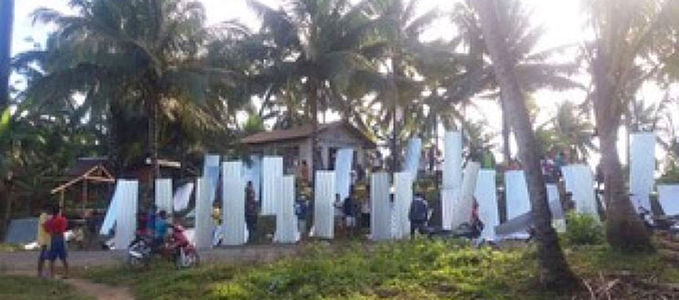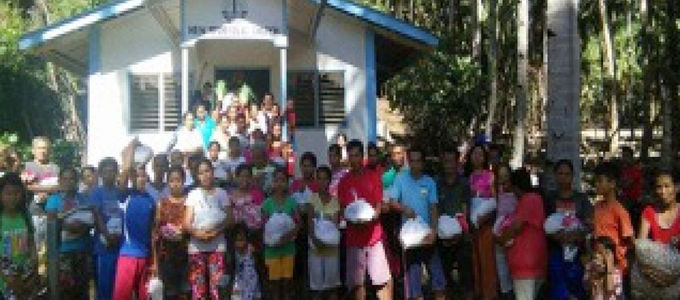Tackling typhoon damage and supporting education
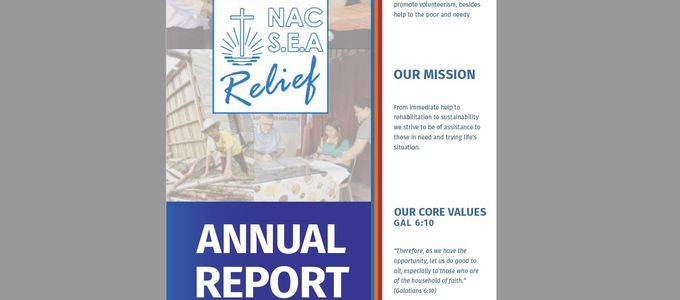
The Philippines is one of the five countries most frequently hit by natural disasters. This is the part of the world in which NAC SEA Relief is active, the charity of the New Apostolic Church South-East Asia.
Twenty typhoons every year, five of which are category 5 storms (dubbed “super typhoons”), more than 10,000 earthquakes since 1970, and six of the most active volcanoes worldwide … These facts could certainly “give the impression that this is not a country to live in and do business in”, Urs Hebeisen says, the president of the charity. But far from it, the people living here “are a most joyful and loving people, probably among the happiest on earth”.
Meanwhile, the conditions are what they are: life in the Philippine islands is often dictated by destruction and reconstruction. And this is something that the people manage with the typical Filipino resiliency: to endure and move on. Urs Hebeisen does, however, say that help is needed, “foreign investment and appropriate aid”. Much has been accomplished in the four decades that he has been in the country, he says. He is grateful and delighted about the many small charitable successes that have been achieved, but he is also thankful for a working democracy in the country, economic growth, and better education opportunities for the young generation.
Activity report published
In the Annual Report 2018, the NAC SEA Relief team looks back over the past year. “We do not accomplish spectacular projects, neither can we pride ourselves to have brought about many changes or claim a major impact,” the organisation states. “Yet we address many individual situations and bring hope by solidarity.” The objective of the charity is to create solutions towards change, and not only provide immediate assistance for the moment.
Emergency aid and reconstruction
A look at the catalogue of measures highlights the fact that many people can dare to move into a new life after a natural disaster.
- In 2017, typhoon Vinta lashed the Philippines just before Christmas. Many families in Abad Santos lost everything. The charity provided emergency aid to 54 families: blankets, nails, kitchen utensils, and food. Help is obviously provided regardless of peoples’ religious affiliation. Most of the houses in the village of Zamboanga del Norte on the river were simply washed away. The storm claimed lives, people went missing, and many lost their livelihood. About 80 families were given food and clothing, and building materials such as galvanised sheets and nails by NAC SEA Relief.
- Typhoon Basyang displaced nearly 9,000 families from their villages in mid February 2018 in the region of Caraga. A total of 149 evacuation centres were set up. Heavy rains hampered the relief efforts. NAC SEA Relief assisted 100 families in the region with food packs, galvanised sheets, wood, and nails to rebuild their homes. Aside from providing money and relief supplies, the NAC SEA relief team also visits the affected people.
- When Typhon Ompong made landfall in September 2018, it left 81 dead, ruined the crops of 170,000 farmers, and destroyed houses, churches, and peoples’ livelihood. The relief operation included the reconstruction of houses, the distribution of food packages, but also clothing and toys for 160 families. Two New Apostolic church buildings were also affected and are now being rebuilt.
Guarantor for education
Building schools in remote areas and offering children and young people a future is another field that the charity is involved in.
- A building with two classrooms for nearly 50 students, completely furnished, and with washrooms, a water system, and a faculty building—Data Bong Primary School was officially handed over to the Department of Education in mid May 2018. Edwin Kuyan, the chieftain of the village, explained that the villagers “know that education is the path out of poverty, but that the village is far away from any schools and that the people have little income to support their children”. He thanked NAC SEA Relief on behalf of the local people for its assistance and making it possible for the children to go to school.
- Similarly, two classrooms were also built in Tamadang Sarangi province. “Only 5 per cent of the population has access to formal education,” Juanito A. Sampan explained at the inauguration ceremony. A lack of learning facilities leads to a migration of teachers, a lack of education leads to an increase in child marriages … The vision is to reverse this trend and enable 95 per cent of young people to receive an education.
- “Education is the only way out of poverty, also in the future,” NAC Sea Relief says. It is the charity’s desire that many more will be able to find their way out of poverty through some form of education. The relief organisation supports successful students with scholarships. Last year eight students who had participated in the scholarship programme graduated. This year, the charity is supporting a total of 31 students.
Working together
NAC SEA Relief receives regular financial support from partners and sponsors, among them NAK-karitativ from Germany and NAK-Humanitas from Switzerland. Everyone involved is grateful for the collaboration. After all, it benefits a “most joyful, loving people, probably ranked among the happiest on earth”.






